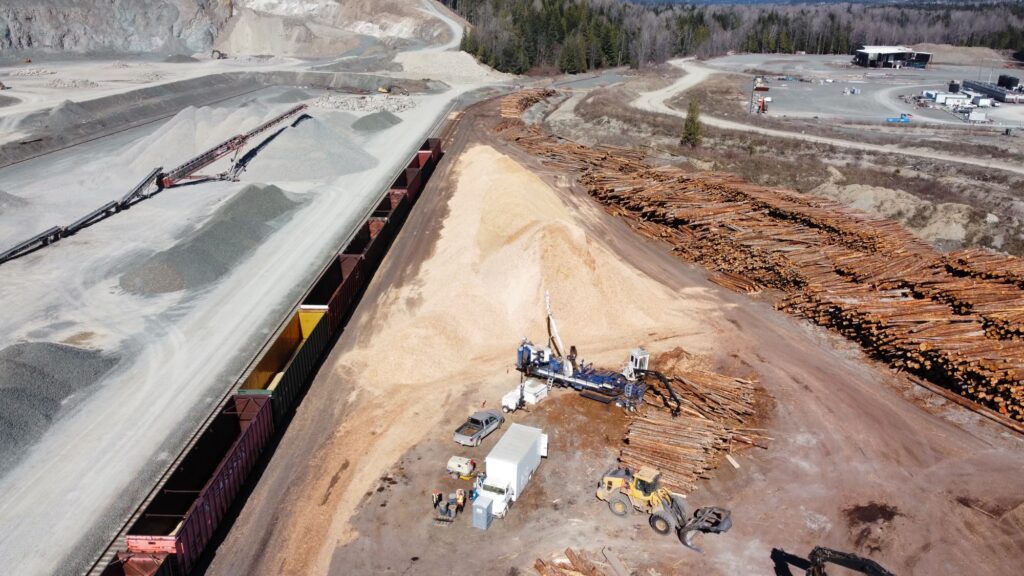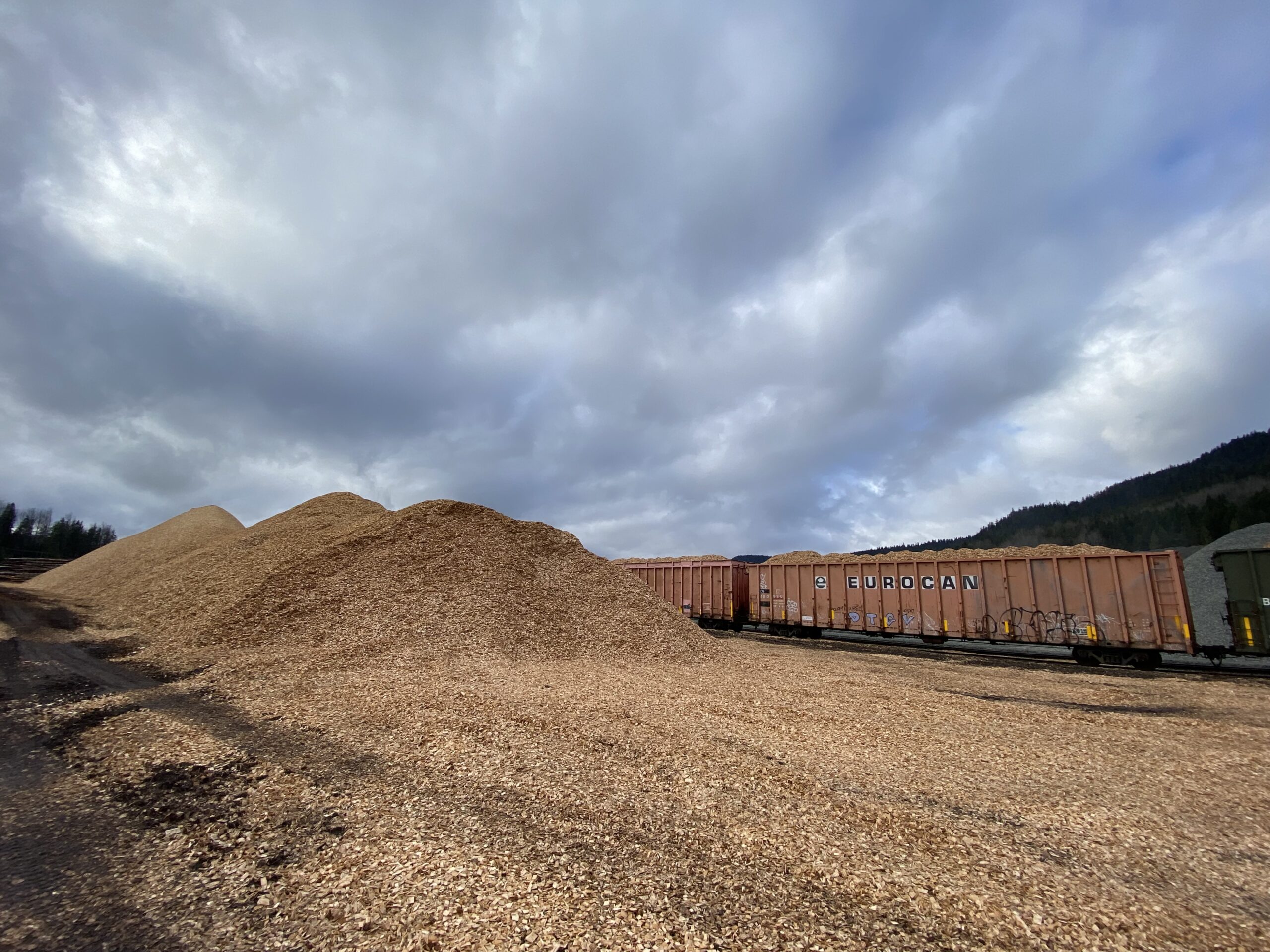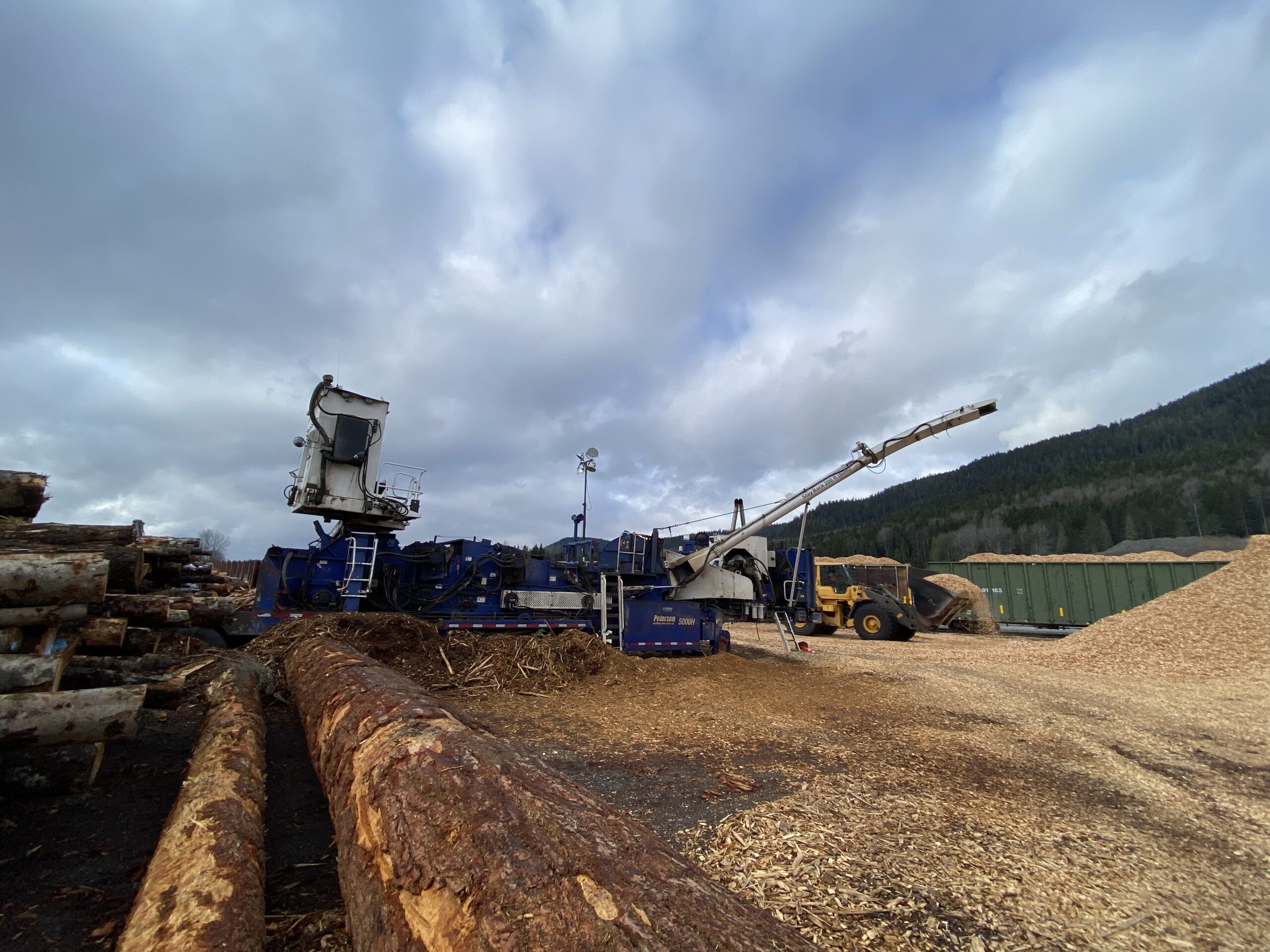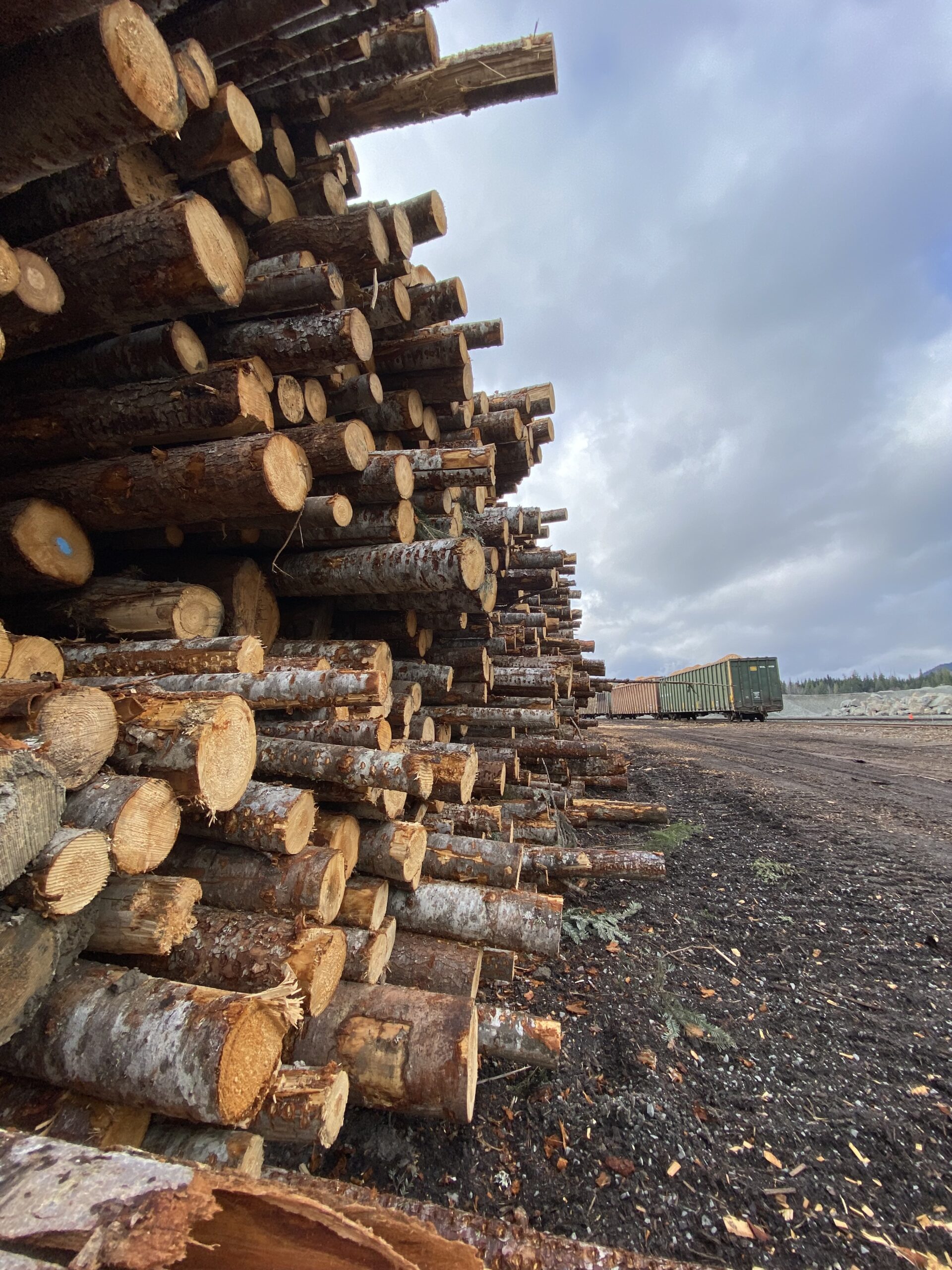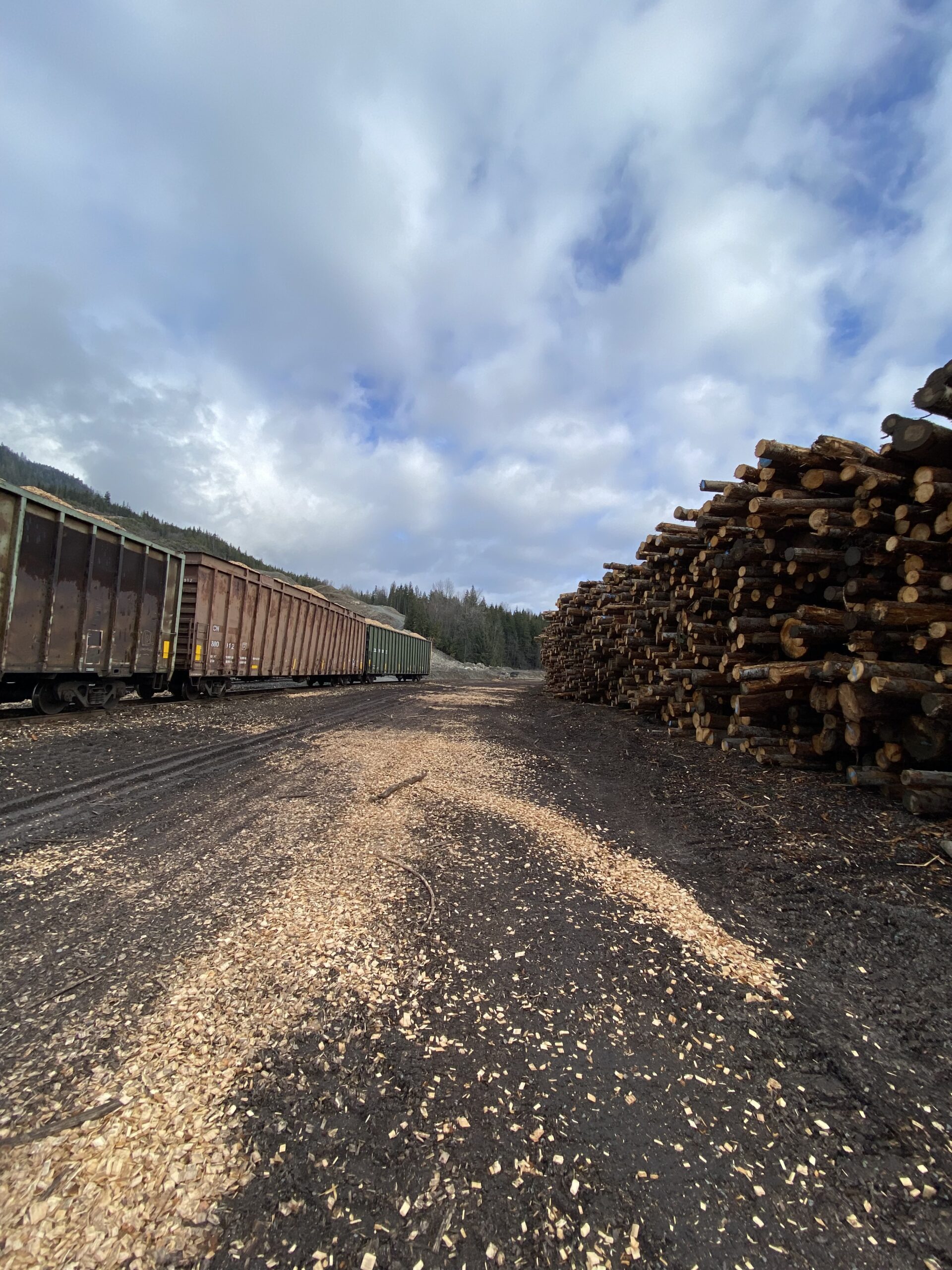Terrace, B.C.: The Forest Enhancement Society of BC (FESBC) continues to play a pivotal role in advancing sustainable forest management practices through its funding for wildfire risk reduction and fibre utilization projects across the province of British Columbia. Through funding initiatives, FESBC has been instrumental in most recently supporting three critical projects undertaken by NorthPac Forestry Group Ltd. (NorthPac). These projects have significantly enhanced forest operations while contributing to British Columbia’s carbon reduction goals.
While the three projects funded by FESBC for NorthPac are similar in nature, each has its own unique aspects. For instance, a portion of the fibre removed by NorthPac and Coast Tsimshian Resources LP (CTR) includes small-diameter tops and limbs, which were historically left in the forest. In securing funding from FESBC, NorthPac and CTR have been able to introduce a chipper in Terrace to recover significantly more wood waste material, contributing to more efficient forest management.
“Forests are at the heart of our identity in B.C., and we are all responsible for ensuring their future,” said Bruce Ralston, Minister of Forests. “As we work to support a strong and sustainable forest sector, FESBC has played a pivotal role in helping get more fibre that would have previously gone to waste into the hands of mills across B.C. to be processed into usable products. These initiatives help get more value out of every tree, increase wildfire resilience and lower greenhouse gas emissions, all while supporting the hard-working people and businesses that make up our forestry sector.”
Cathy Craig, CEO of NorthPac, highlighted the importance of FESBC’s support. “The Forest Enhancement Society of BC’s funding is crucial for NorthPac and our partners. Without it, we would not be able to economically move a significant portion of the wood fibre in the forest due to challenges such as the long distances to haul logs and low-value fibre. For instance, some blocks – or forest areas – consist of over 50 percent pulp, a lower-value wood fibre unsuitable for making more valuable products. The Forest Enhancement Society of BC’s financial support has helped us not leave this material behind to be burned, ensuring its more efficient utilization.”
Northwest B.C.’s forests are a testament to the region’s diversity, ranging from wetter coastal forests to drier areas more prone to wildfire. The absence of major sawmills and the limited presence of significant industry players necessitate innovative approaches to timber utilization. Local mills cannot process all the different species and log sizes in the region’s forests, resulting in a dynamic system of fibre distribution. Timber harvested in the region often follows various routes, including being supplied to local mills, transportation to the lower mainland and for export to other parts of the world.
Since partnering with FESBC, NorthPac has transported over 150,000 cubic metres of pulp logs and wood waste for utilization, significantly reducing carbon emissions that would have resulted from burning. Of the total transported material, a substantial portion of this fibre went to pulp mills in the lower mainland in the form of pulp logs and wood chips. Some of the material has gone to Drax to make wood pellets, and a small amount was used to produce squared-off logs, or cants, in Houston, B.C. Most recently, some of the wood chips were sent from Terrace to the Canfor pulp mill in Prince George via rail.
Andrew Burke, Director of Business Development with NorthPac, noted, “If this material had been burned as logging waste, it would have emitted upwards of 200,000 tonnes of CO2, which is equivalent to the CO2 emissions produced by 61,273 vehicles in a year*.”
The FESBC-funded projects have not only contributed to environmental sustainability but have also significantly benefitted the economy. Approximately 4,350 full-time equivalent days of employment have been supported, creating new job opportunities, and driving local economic growth.
Moreover, these projects are immensely important for Indigenous communities in the region.
Kelly Sampson, director of Coast Tsimshian Resources LP, noted, “The involvement of Indigenous communities in forestry projects is paramount to ensuring sustainable development and economic empowerment. Through collaboration with NorthPac and FESBC, we are strengthening our stewardship of the land while creating opportunities for meaningful participation and benefits for our people.”
Indigenous involvement and benefits are integral components of forestry operations in Northwest B.C. For example, CTR, owned by the Lax Kw’alaams Band, is the largest licensee in the Terrace area. Additionally, every road permit and cutting permit application undergoes review by the nations whose territory it overlaps, ensuring their input guides the operations.
Calvin Carlick, director of partnership and business development with the Tahltan Nation Development Corporation, said, “Tahltan Forestry recognizes the importance of responsible forestry practices on our territory. Through collaborative efforts with NorthPac and the support of FESBC, we strive to uphold our stewardship responsibilities while creating sustainable economic opportunities for our people. This partnership represents a meaningful step towards ensuring the health and vitality of our forests for generations to come.”
While the Lax Kw’alaams Band and Tahltan Nation are directly involved in the work on two of the projects, NorthPac also works directly with many of the Gitxsan Wilps (House Groups) who receive economic benefits from the logging that takes place on their Lax’yip (territories). Moreover, the Kitsumkalum are indirectly involved as the chips generated from the project are being loaded into rail cars at the Kitsumkalum rail yard.
In addition to benefiting NorthPac’s operations and some of the Indigenous communities in the region, the funding has had a positive impact on the operations of the Terrace Community Forest (TCF), as highlighted by Kim Haworth, RPF, General Manager of the community forest. Haworth noted, “The project, as I understand it, was for chipping the small diameter log that usually ended up in our burn piles. This was a desirable log for the chipping program and allowed Terrace Community Forest to increase utilization while reducing the size of our waste piles and carbon emissions by approximately 50 per cent.”
The ripple effect created through the funding has also resulted in employment opportunities for TCF’s logging crew and supervisor, contributing to local economic development. While specific numbers for employment created were not available, it was estimated to be in the neighbourhood of 150 days. Haworth further emphasized the importance of continuing such programs to further reduce wood waste, increase utilization, and create employment opportunities for the community forest.
Chris McGourlick, operations manager with FESBC, acknowledged Northpac’s initiative in fibre utilization and said, “Northpac has taken a leadership role in helping facilitate the utilization of fibre in the Skeena area. Their successful collaboration with their First Nation partners and local tenure holders is helping find new outlets to address the limited options available for low value and residual fibre. These new options help reduce greenhouse gas emissions through pile burning, provide a stabilizing influence for the local workforce and economy and maximize the utilization of our forest resources.”
As NorthPac navigates the complexities of forestry in Northwest B.C., Burke shared that an ongoing challenge was addressing more common misconceptions, especially the ones troubling recreation users. Burke believes it’s important for people to understand there are a set of higher-level plans that govern land use. These plans include the Kalum Sustainable Resource Management Plan, Kispiox Land & Resource Management Plan (LRMP), and Cassiar Iskut-Stikine LRMP, among others. There are also a few First Nations-developed Land Use Plans (LUP), such as the Gitanyow LUP that NorthPac follows.
“The important message here is that before companies even step foot in the forest to identify potential harvest areas, there are already a host of protections in place, such as Old Growth Management Areas, wildlife habitat areas, and protected scenic areas with Visual Quality Objectives,” noted Burke. This is in addition to the wonderful parks in the area that can never be harvested, such as Seven Sisters Provincial Park and Protected Area, Swan Lake / Kispiox River Provincial Park, and Kinaskan Lake Provincial Park, to name a few.”
According to Burke, it is also important for recreational users to understand the immense contributions made by forestry to the infrastructure development in B.C. through its contributions to building and maintaining the province’s extensive road and bridge network.
“Each year, we spend millions of dollars on infrastructure development and maintenance activities, such as plowing snow, grading roads, and repairing bridges. This infrastructure enables public access to recreational areas for activities like hiking, camping, mountain biking, fishing, and hunting. The industry’s substantial investment in infrastructure upkeep enhances public accessibility,” Burke asserted.
Today, NorthPac, which owns a licence in the Kispiox timber supply area, and jointly manages licenses owned by the Lax Kw’alaams Band, Tahltan Nation Development Corporation, and Haisla Nation (a combined annual allowable cut exceeding 1,000,000 cubic metres), remains committed to sustainable forest management and maximizing fibre utilization. This commitment is more attainable with the support of strategic funding from FESBC, despite the numerous challenges inherent to forestry operations in Northwest B.C.
* Per the Greenhouse Gas Equivalencies Calculator: https://oee.nrcan.gc.ca/corporate/statistics/neud/dpa/calculator/ghg-calculator.cfm#results
FESBC would like to gratefully acknowledge the financial support of the Province of British Columbia through the Ministry of Forests.

